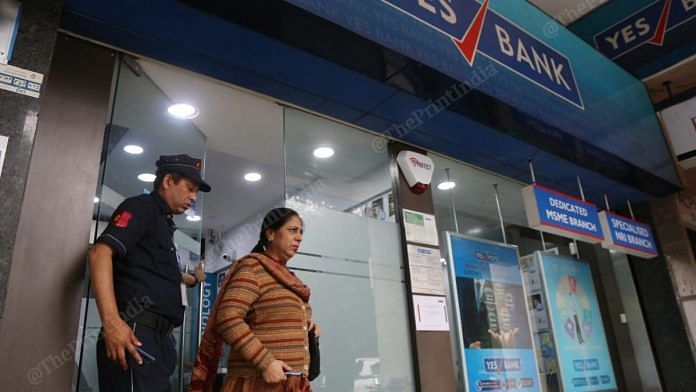Mumbai: The digitisation of know your customer (KYC) documents with a central registry has finally gained momentum, with financial services providers like banks, mutual fund houses and insurance companies crossing the 25-crore uploads mark earlier this month, ThePrint has learnt.
This means the KYC data of nearly a fifth of the country’s population is now stored digitally, which the financial service providers can access for offering services to the customer, who will not have to supply any documents for availing such services.
According to sources in the banking industry, the process, which started in early 2017, took nearly two years to reach the 10-crore mark. But this more than doubled over the last 17 months. From 10 crore uploads in March 2019, the figure crossed the 25-crore mark in August.
The process is said to have gained momentum mainly due to the efforts put in by the finance ministry and the financial sector regulators, particularly the Reserve Bank of India (RBI).
“RBI has given a huge push to the process, along with the department of the financial services of the finance ministry. They were literally after the banks to speed up digitisation drive,” said a senior banker from a public sector bank.
“They monitor the exercise periodically and performance of banks is reviewed at regular intervals,” the person added.
A committee of financial sector regulators including the Central Registry of Securitisation Asset Reconstruction and Security Interest of India (CERSAI), chaired by RBI, takes all the decisions with reference to the registry. The committee meets periodically to review the progress.
The RBI-regulated entities, particularly some commercial banks, have taken a lead in uploading the data in digitised form. These entities contributed almost 90 per cent of the uploads.
Bank of Baroda, State Bank of India and Axis Bank have actively participated in the process, said the sources. However, there are a few commercial banks that are yet to digitise information of any customer, they added.
The storing of customers’ KYC data with a centralised agency will speed up the process of credit delivery and will be beneficial to players offering small ticket loans since it reduces the customer acquisition cost and lowers the time taken to deliver credit, said the bankers.
While the banks have taken a lead so far, it is time now for other non-RBI regulated entities to actively participate in the process.
Also read: RBI’s first Monetary Policy Committee bows out, its record sullied by inflation at the end
What KYC is and how it works
The idea of a central KYC was mooted in 2011-12 with the objective of easing the process of providing financial services to the customers by avoiding repeat of submitting documents every time an individual avails a financial service.
In other words, if a person has opened a savings account in a bank or taken a mutual fund from an asset management company, then the customer is not required to repeat the entire process of submitting documents for the verification of the KYC process next time.
When a customer takes a financial service for the first time, the KYC documents are uploaded with CERSAI, a government entity, which functions as the central KYC records registry (CKYCR).
The registry then creates a unique KYC identity number of the customer known as KYC identifier, after making sure no other existing individual’s data matches with the new customer. The identity number is then shared with the customer over mail, and can be used for availing a financial service from another service provider, and the service provider can simply download the information before offering the service.
Why the slow progress
The process of uploading KYC documents started in early 2017. However, it was slow initially.
One reason was that the financial services providers were not equipped with the technology required to digitise the physical records. Most players have now outsourced the process of digitisation of physical records.
The second reason was apprehension among large banks. They thought the main gainers of the process will be the smaller entities, since the cost of acquiring a new customer reduces significantly as the entire KYC data is available to them readily.
Some estimates suggest that the customer acquisition cost of a government bank is Rs 250 per customer, while the same for a smaller bank, or a non-banking finance company or a payment bank ranges between Rs 1,000 to Rs 1,500. The entities are required to pay a small fee to the central registry to access the data of an individual.
Another reason for the sluggish progress was that the government decided to make Aadhaar mandatory for opening a bank account. With the unique identity number, there was no requirement for any other identification number.
But after the Supreme Court ruled in 2018 that Aadhaar cannot be made mandatory, the process of digitisation of records gained momentum.
Also read: Kamath panel won’t look at retail loans restructuring, banks will decide, RBI says






